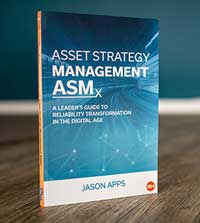
If your reliability programme isn’t meeting performance goals you may need to look at your overall strategy, says Jason Apps, CEO of ARMS Reliability.
It’s a typical story. You implement a CMMS (or enterprise asset management or ERP) system – but it doesn’t deliver the return on investment.
The system and associated work execution management (WEM) process was meant to improve the performance of assets, but failures keep occurring at a cost to your business.
So you decide to upgrade the system. It’s a significant investment – perhaps you consolidate disparate systems into one single instance, or maybe the cost comes with moving to the cloud. Still performance doesn’t improve.
In all this, one thing is missing. Fundamentally, the performance you get from your assets will depend on how you care for them, and this is dictated by the reliability strategies you have in place – that is, the maintenance plans and related content within the EAM system. It doesn’t matter how much you spend on the system – if your master data is lacking, you won’t get anywhere.
A stepping-stone, not a solution
When organisations find that their investment in WEM and EAM systems doesn’t improve performance, they often turn to the latest technology to help – such as Asset Performance Management. APM monitors asset condition and health in a bid to prevent unplanned, in-service failures by detecting degradation and allowing a planned intervention to occur. The APM approach takes a backward look at performance and provides some security against catastrophic failure.
Although it helps to detect an impending failure, APM doesn’t address the cause of degradation. It won’t help determine how to change the strategy to prevent degradation in the first place, or extend the life of the asset as much as possible.
Reliability strategy provides the forward look needed to achieve the performance you require from the assets. If you want to get any return from an EAM system or an APM program, it must be combined with an effective reliability strategy. Reliability strategy develops the content that an EAM system needs to be effective, and it achieves performance that APM can then monitor and provide some protection around.
A single strategy session won’t work
Recognising the value of strategy, some organisations conduct a formal strategy-setting project for some of their assets. This may be a valuable exercise, but generally it is conducted as a finite project with a start and end date, and typically it is time-consuming to complete and implement.
Then, once the reliability strategy is implemented, it deteriorates over time. People with good intentions – but using no formal review or justification process – change the strategy for the worse. Or operating conditions change yet the strategy is static. In either case, the strategy is no longer aligned to performance goals and you lose control. Failures occur, costs rocket and risk increases.
The missing piece of the puzzle
What’s missing is Asset Strategy Management (ASM). ASM is a key pillar of an asset management system – it stands alongside EAM and APM, supporting them and enabling them to generate the returns they promise.
With ASM, you build, deploy and govern reliability strategy with a focus on achieving performance goals at minimum cost and acceptable risk. The reliability strategies are deployed using a digitally connected dataset to drive rapid, efficient and effective reliability strategy management over time. It ensures that optimal strategies are always applied to all assets.
Strategy no longer deteriorates, meaning that the EAM system and WEM process can achieve the performance improvements they promised. APM supports risk management by detecting impending failures, and it also collects data to support further refinement and evolution of reliability strategies via the ASM process.
In an organisation that has introduced ASM, the WEM process has a direct connection to reliability strategy decision-making. All like assets are connected and improvements are introduced across the entire organisation, and all decisions follow the appropriate workflow of review, approval and justification.
ASM provides both a forward-looking performance focus, as well as embedding root cause analysis to prevent recurrence should a failure still happen.
Performance starts with strategy. Your reliability strategy is an asset and ASM protects, manages and improves that asset over time.

To learn more visit www.armsreliability.com
or get a copy of Jason Apps’ book,
Asset Strategy Management ASMx:
A Leader’s Guide to Reliability
Transformation in the Digital Age at
https://insight.armsreliability.com/asmx

